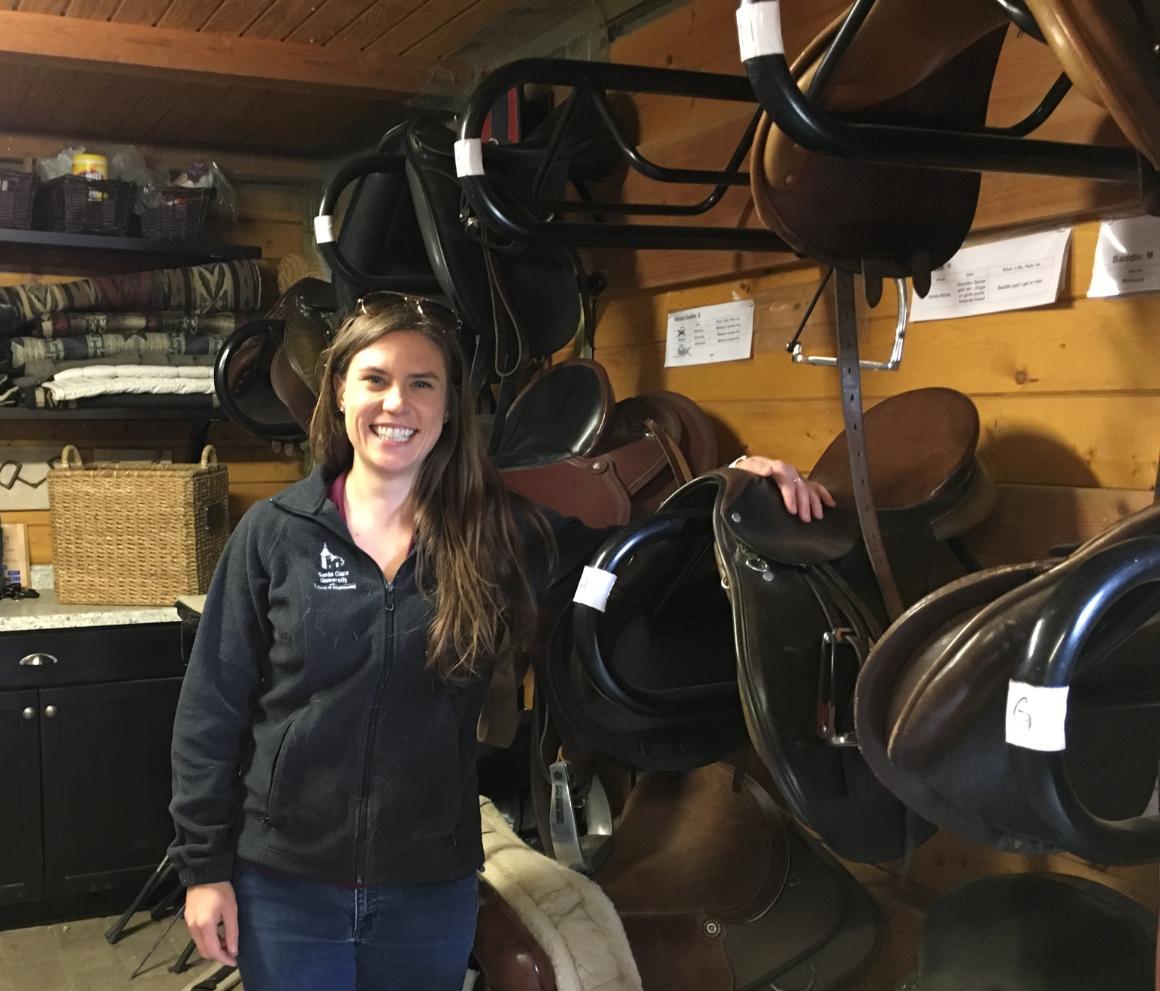
Grad Students Aren’t Horsing Around
It’s no walk in the park to operate a therapeutic horse riding nonprofit that each week serves 150 riders dealing with 30 different disabilities, while keeping track—on paper!—of which riders like which horses, what tack goes with each horse, how many hours 12 horses have been worked, the schedules of more than 100 volunteers, and on and on. As a volunteer at B.O.K. Ranch in Woodside, computer engineering master’s student (and former program director for SCU’s Frugal Innovation Hub) Elizabeth Sweeny knew there was a better way. So, for their year-long graduate software engineering capstone project, she and teammates Ryan Lowe, Neha Soma, and Jeffrey Wick took the reins on designing a “full-on web system—an entire front and back end web portal to help coordinate their daily operations,” said Sweeny.
The design makes it easy for instructors and staff to schedule therapy sessions by selecting riders, horses, volunteers, and tack using drag and drop functions. If Idgie has reached her weekly limit of hours, she’s not found on the list of available horses; if a rider needs rubber bands to secure feet in stirrups, that information populates automatically, as does the proper saddle, bridle, and other gear associated with the selected horse. Volunteers can quickly view and make changes to their schedules, request and schedule a substitute, and access policy manuals. Parents will be well served by an online intake system and be able to view periodic notifications confirming that all the information is still accurate.
“We’re also making it easier for B.O.K. to collect data for their Professional Association of Therapeutic Horsemanship certification,” Sweeny said. “Now, they collect data manually in a number of different categories, including the age of riders, types of activities for each student, volunteer and horse hours. There is a lack of consistency in how the information is gathered and maintained. This website will automatically track everything.”
Making all the decisions for the full technology stack hasn’t been so easy. “It took us about five weeks to make all the technology decisions,” Sweeny said, explaining: “Our professor, Zoltan Kurczveil, was really good at guiding us through that process; he has significant industry experience that really aids in determining what technologies to use. The back end uses Python in a Flask framework; the front end will be in HTML5 and JavaScript, utilizing bootstrap to help with the scaling of the user interface.” Now that they’ve designed and mapped the system from front to back end, the team is coding and building it from scratch.
“This project has been really fun,” Sweeny said. “Overwhelming at times, but we stay motivated because we know how much our work will change B.O.K.’s day-to-day operations. Plus, two of the four of us on the team had never seen a horse before, so exposing them to a whole new world was a bonus!”
Elizabeth Sweeny in the Tack Room at B.O.K. Ranch, for which she and fellow grad students are creating a web system to ease daily operations. Photo: Heidi Williams